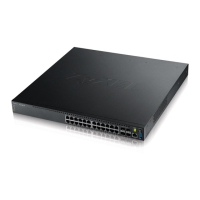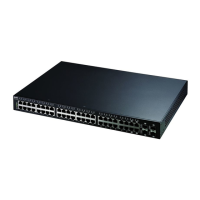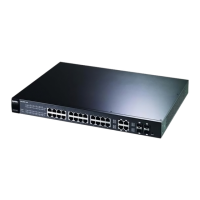GS3700/XGS3700 Series User’s Guide
390
CHAPTER 39
ZULD
39.1 ZULD Overview
A unidirectional link is a connection where the link is up on both ends, but only one end can receive
packets. This may happen if OAM was initially enabled but then disabled, there are misconfigured
transmitting or receiving lines or the hardware is malfunctioning. ZyXEL Unidirectional Link
Detection (ZULD) is a layer-2 protocol that can detect and disable these physical one-way links
before they cause loops or communication malfunction.
In the figure below, S1 - A is a bidirectional link as both ends can send packets to each other. S1-B
is unidirectional as B cannot send packets to S1 (although the S1-B link is up). Similarly, S2-S1 is
unidirectional as S1 cannot send packets to S2 (although the S1-S2 link is up).
Figure 284 ZULD Overview
39.1.1 What You Can Do
• Use the ZULD Status screen (
Section 39.2 on page 391) to see details on ZULD.
• Use the ZULD Configuration screen (
Section 39.3 on page 393) to enable ZULD on a port,
configure a mode and set the probe time.
39.1.2 What You Need to Know
• ZULD must be enabled on the Switch and the port(s) in order to detect unidirectional links by
monitoring OAMPDUs.

